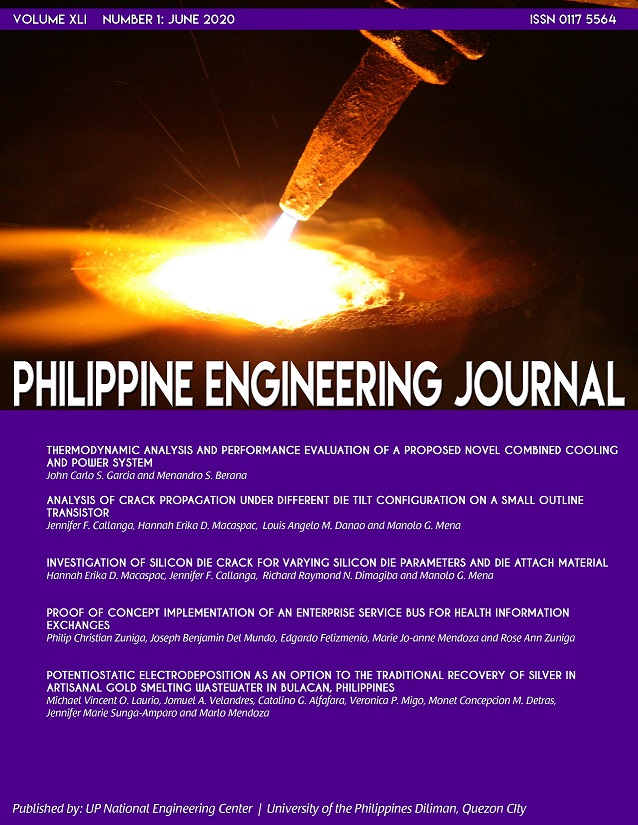Potentiostatic Electrodeposition as an Option to the Traditional Recovery of Silver in Artisanal Gold Smelting Wastewater in Bulacan, Philippines
Abstract
Abstract – Potentiostatic electrodeposition for silver recovery in the artisanal gold smelting of Bulacan, Philippines was investigated as an alternative cost-effective method to prevent the generation of copper nitrate-rich effluent. The electrodeposition of dominant metal ions (silver, copper, iron, and lead) were observed from time-course profiles of metal ion removal efficiencies and measured currents at varying constant operating voltages. Initial silver ion removal rates increased with operating voltage supplied, however, redissolution also occurred during high-potential operation (1.5V to 2.0V). The occurrence of co-deposition and redissolution was managed by determining critical electrodeposition conditions. A critical operating voltage of 1.33 V favored high silver purity from recovered deposits at 89.5%, while critical electrodeposition time minimized the occurrence of metal redissolution under high-potential conditions. At an optimum voltage of 1.66 V, the observed silver ion removal was 77.8% and the silver purity from recovered deposits was 86.5%. Finally, the charge dose scale-up parameter was 0.528 C/mg silver ion removed and the corresponding energy requirement was 0.24 kWh/kg silver ion removed. Considering the increased silver purity from recovered deposits, and the lower charge dose and energy requirement, this study presents some advantages of potentiostatic electrodeposition in artisanal gold smelting.
Keywords: electrodisposition, gold smelting, silver nitrate, scale-up, charge dose


